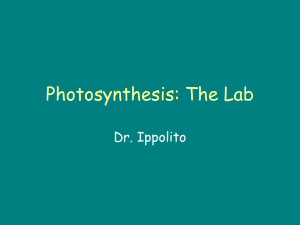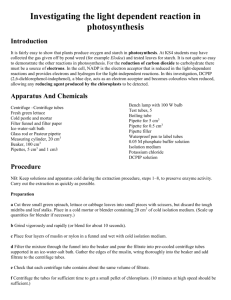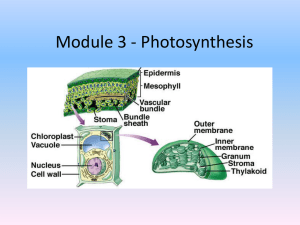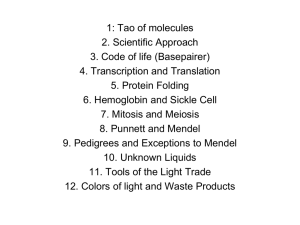The Hill Reaction - Activity - Lesson element (DOCX, 263KB) Updated 07/03/2016
advertisement
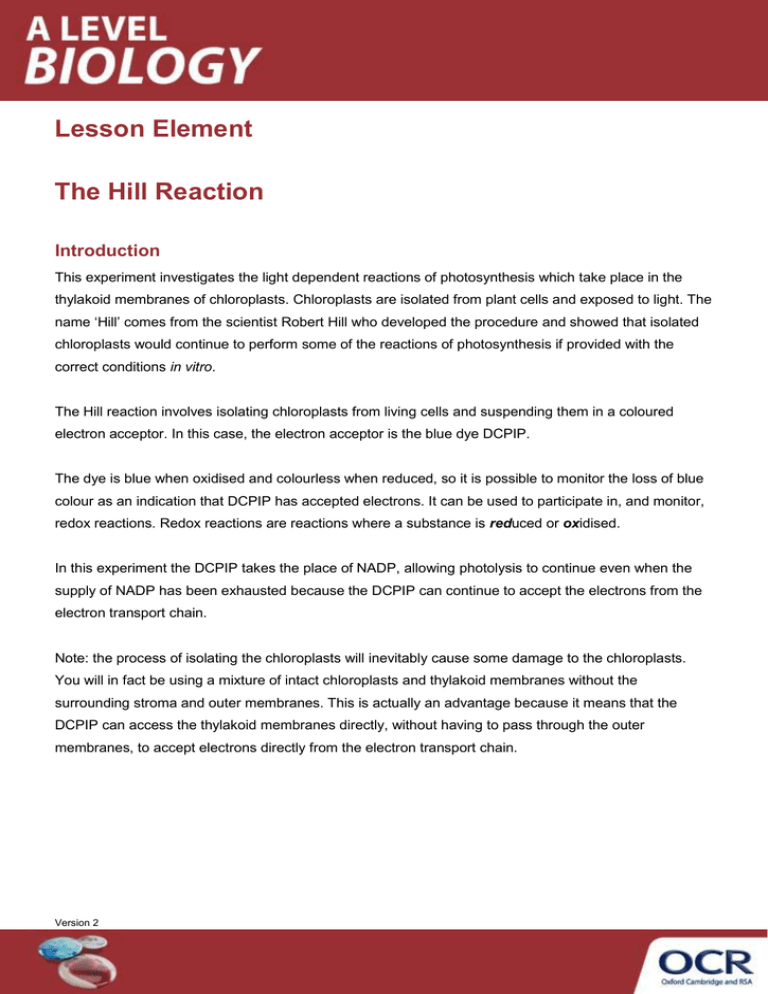
Lesson Element The Hill Reaction Introduction This experiment investigates the light dependent reactions of photosynthesis which take place in the thylakoid membranes of chloroplasts. Chloroplasts are isolated from plant cells and exposed to light. The name ‘Hill’ comes from the scientist Robert Hill who developed the procedure and showed that isolated chloroplasts would continue to perform some of the reactions of photosynthesis if provided with the correct conditions in vitro. The Hill reaction involves isolating chloroplasts from living cells and suspending them in a coloured electron acceptor. In this case, the electron acceptor is the blue dye DCPIP. The dye is blue when oxidised and colourless when reduced, so it is possible to monitor the loss of blue colour as an indication that DCPIP has accepted electrons. It can be used to participate in, and monitor, redox reactions. Redox reactions are reactions where a substance is reduced or oxidised. In this experiment the DCPIP takes the place of NADP, allowing photolysis to continue even when the supply of NADP has been exhausted because the DCPIP can continue to accept the electrons from the electron transport chain. Note: the process of isolating the chloroplasts will inevitably cause some damage to the chloroplasts. You will in fact be using a mixture of intact chloroplasts and thylakoid membranes without the surrounding stroma and outer membranes. This is actually an advantage because it means that the DCPIP can access the thylakoid membranes directly, without having to pass through the outer membranes, to accept electrons directly from the electron transport chain. Version 2 Procedure 1. Grind 5 g of freshly chopped leaves with 10 cm3 of ice cold 0.5 M sucrose solution using a pestle and mortar 2. Strain the resulting liquid into a cooled centrifuge tube and centrifuge for 5 minutes at medium speed 3. Decant the supernatant into another cooled centrifuge tube and centrifuge for a further 10 minutes at high speed 4. Carefully pipette off the supernatant of this tube and discard. Now using the sediment, add 2 cm3 of the ice cold sucrose solution and mix gently 5. Add 20 cm3 of ice cold pH 7.0 phosphate buffer solution and mix well 6. Add 5 cm3 of the chloroplast/ice-cold phosphate buffer solution into each of the test tubes labelled A, B and C 7. Take tube C and boil for five minutes using a water bath made of a small beaker over a Bunsen burner and then cool the tube under a running tap 8. Add 10 cm3 DCPIP to each of tubes A and B and C 9. Leave tubes A and C under a bench lamp to make sure they are well lit 10. Put tube B in a dark cupboard 11. Keep observing tube A until the blue colour of the DCPIP has completely disappeared 12. At this stage remove tube B from the cupboard and compare all three tubes 13. Extension: cover tube A and B in aluminium foil to exclude light and see whether over time the DCPIP in tube A returns to its oxidised state. Version 2
